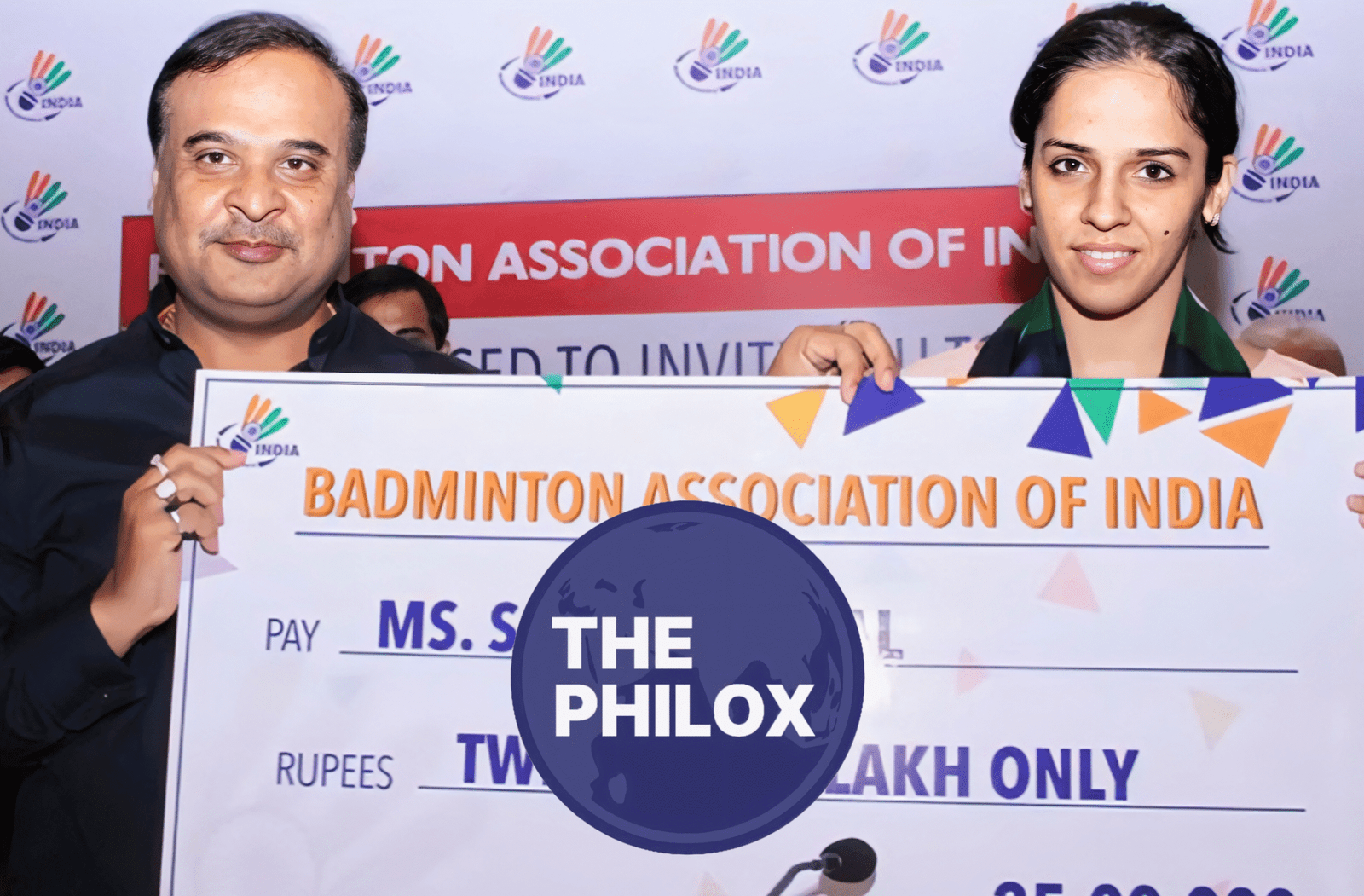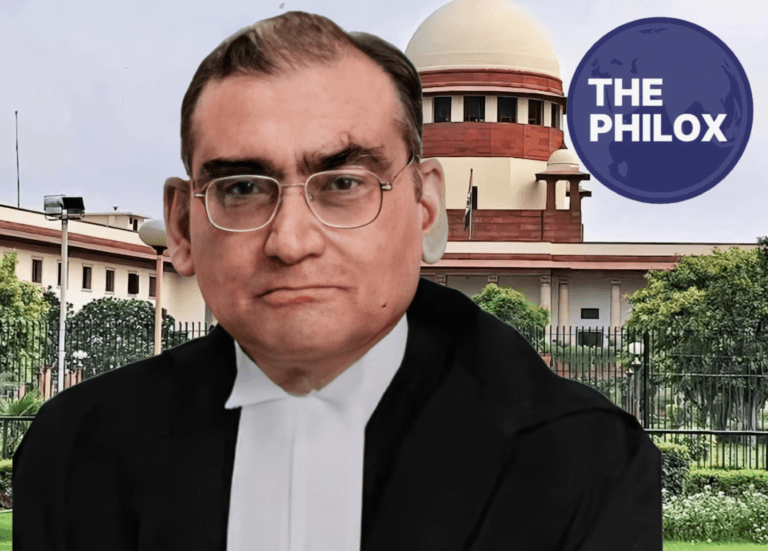
For advertisement on our platform, do call at +91 6377460764 or email us at contact@thephilox.com.
Himanta Biswa Sarma Underlines Scrutiny Following Disappointingly Poor Sudirman Cup Campaign of Indian Badminton Team
With Badminton Association of India (BAI) President Himanta Biswa Sarma under more and more criticism, the underperformance of the Indian badminton contingent in the Sudirman Cup has spurred a tsunami of comments from fans, past players, and experts.
Questions over the direction of the sport under Sarma’s leadership are being asked as India once more fails to have a notable influence in the elite mixed team competition.
Repeated Mistakes in a Major World Event
Held biennially, the Sudirman Cup is among the most elite badminton events worldwide. Unlike single championships, it evaluates a nation’s depth throughout five disciplines: men’s and women’s singles, men’s and women’s doubles, mixed doubles.
Expectations have always been great for a country like India, home of talents like P.V. Sindhu, Lakshya Sen, and Satwiksairaj Rankireddy.
But India has regularly fallen short of moving past the group levels in most recent tournament editions. The 2025 version was same.
The team lost vital ties and displayed a lack of depth, strategy, and cohesiveness, therefore failing even with a competitive team on paper.
Rising Complaints About BAI Leadership
Having assumed control of the Badminton Association of India in 2017, Himanta Biswa Sarma has become rather prominent in Indian sports management.
Although credited with introducing organizational structure to the BAI and encouraging badminton in the northeastern states, Sarma is currently under fire for systematic problems that have resulted in India’s global stagnation.
Former players and coaches have publicly challenged the squad selection process, inadequate scouting for doubles talent, and the young development policies’ short-sightedness.
Furthermore underlined has been the neglect of sufficient investments in sports science, physiotherapy, and psychological training.
Player Selection: An Inaccurate Method
One of the main complaints leveled at the BAI under Sarma has been the dubious choice of national team players. Several insiders claim that occasionally politics and partiality have shaped choices more than performance and potential.
Some of the top domestic circuit players in the recent Sudirman Cup were apparently passed over in favor of more well-known individuals, some of whom lacked form.
The team has suffered greatly in events demanding depth and adaptability across all divisions from this reliance on a small number of outstanding players while neglecting to foster a strong second tier of skill.
Strategic Deficiencies and Coaching
Critics also highlight how under Sarma’s direction there is no clear coaching vision. India’s coaching system is disjointed unlike countries like China, Japan, or Korea, which have long-term athlete development programs and a consistent coaching approach.
The team’s poor performance can be ascribed to regular changes in the coaching staff, inadequate emphasis on doubles discipline, and unclear road plan for young development.
In many of its Sudirman Cup games, the Indian team was tactically underprepared, with players often outclassed not from lack of skill but rather from bad match strategy and insufficient preparation.
Neglect of Doubles: a Constant Weakness
Although Indian singles players have become somewhat successful abroad during the past ten years, doubles remains a clear flaw.
Though several innovations by couples like Satwiksairaj Rankireddy and Chirag Shetty, the doubles program lacks consistency and depth.
India’s chances in team tournaments like the Sudirman Cup are greatly diminished by its incapacity to field competitive doubles teams in all three formats—men’s, women’s, and mixed.
The lack of a thorough doubles training program and scouting system has grown to be a major problem needing quick correction.
Insufficient Planning and Long-Term Vision
Lack of a long-term strategic plan is another major problem endangering Indian badminton. Although sporadic Olympic and World Championship triumphs have generated temporary excitement, there does not seem to be a clear plan for ongoing world competition.
Under Sarma’s direction, detractors contend that the BAI has been reactive rather than proactive, honoring individual successes instead of creating a pipeline of future champions.
The little effort being done to advance badminton at the grassroots level clearly shows lack of foresight.
Many state associations still lack infrastructure, certified instructors, and exposure chances for upcoming players. India’s foreign aspirations are on unstable ground without a basic framework.
Administrative Problems and Demand for Responsibility
Discontent among the badminton fraternity is building among these underwhelming performances.
Reportedly, several state associations have expressed their worries privately, calling for increased openness in decision-making and more cooperation between national and local entities.
Calls for an internal assessment of BAI’s leadership responsibility and performance are mounting.
Critics of Himanta Biswa Sarma contend that Indian badminton need a full-time administrator—one totally committed to the growth and administration of the game—while he manages his position as a major political leader and BAI President.
Player Views
Though many of the present players have refrained from publicly disparaging the BAI, there have been minute indicators of discontent. Interviews following games have included nebulous comments about lack of support and readiness.
Speaking anonymously, some younger players have reported trouble getting mentoring, foreign experience, and top-notch training.
Indian badminton cannot really grow in an environment where athletes feel heard, supported, and respected—not only utilized as tools to gain medals periodically.
The Way Forward: Required Structural Reforms
India needs thorough structural changes if it is to become a real powerhouse in world badminton. These consist of:
Restructuring the Selection Process: creating a clear, merit-based mechanism to guarantee worthy sportsmen receive public attention.
Recruiting and keeping seasoned foreign coaches across all disciplines with an eye on long-term growth would help to strengthen the coaching ecosystem.
Establishing specific training facilities and scouting initiatives targeted just on developing competitive doubles couples helps to foster double talent.
Investing in sports science means making sure athletes have access to first-rate physical conditioning, rehabilitation, nutrition, and mental conditioning assistance.
Building academies and infrastructure in smaller areas will help to increase the talent pool.
An Essential Event for Indian Badminton
The Sudirman Cup scandal has to be a wake-up call for all those engaged in Indian badminton as well as for the BAI leadership.
Now Himanta Biswa Sarma finds himself at a crossroads. He could either start the required changes and revive Indian badminton or run the danger of being known as the leader during whose time the nation’s most promising sportsmen started to fade.
The time for reflection is long gone as supporters grow impatient and world competition only gets more fierce. Indian badminton demands strong, revolutionary action right now.






